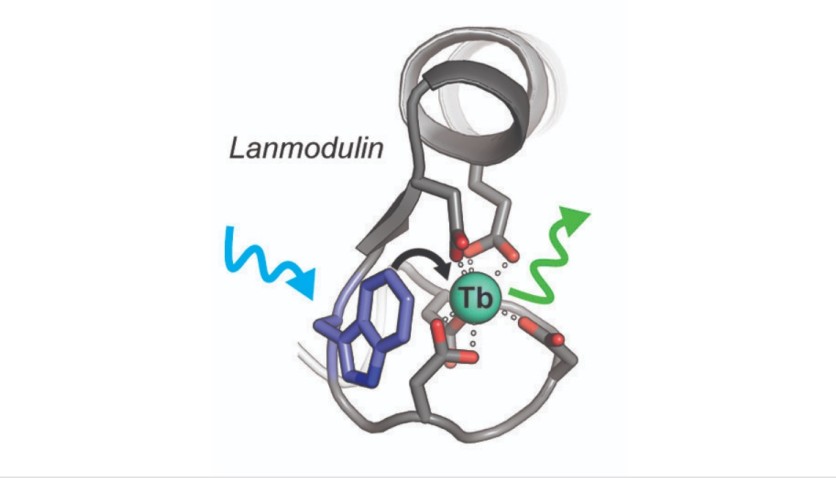Researchers from Penn State have developed a luminescent sensor that can detect a rare-earth element called terbium. The scientists managed to create this equipment by binding protein to the element.
Later, the protein will be collected to pave the way for the crafting of the metal which is commonly used in energy lighting, smartphones, and even EV batteries.
What is Terbium?

For those who do not know this rare-earth element, this is mostly utilized in different technologies that we use daily. Modern equipment such as solid-state devices (SSD), lighting, and mobile phones contain terbium.
In smartphones, terbium is the responsible component for giving a green pigment to the LCDs. While it is fascinating to know that it has a variety of uses, getting this rare-earth element could be challenging for scientists.
For instance, ICP-MS, the high-standard technique for the detection of terbium, might be costly for those who want to use it. This mass spectrometry method could also present environmental problems such as the interference of acid to the element.
The senior author of the terbium study, Joseph Cotruvo Jr. said that the presence of terbium in the planet is abundant in unusual areas such as acid mine drainage and e-waste, according to Penn State News.
"In this study, we developed a luminescence-based sensor that can be used to detect and even quantify low concentrations of terbium in complex acidic samples," the Louis Martarano Career Development Professor of Chemistry said.
Lanmodulin's Role on the Terbium Sensor
The luminescent sensor will not work without the binding protein, lanmodulin which is well-suited for the rare-earth elements. The binding property of the protein fits its use to the sensor.
The researchers knew that to make lanmodulin useful for the sensor, they needed to add amino acid tryptophan to alter it.
Cotruvo noted that tryptophan serves as terbium's sensitizer.
To give you an example about its use, terbium is the key component for the green color on smartphone displays.
The binding of lanmodulin and tryptophan yields an emitted light which represents the terbium concentration.
According to Cotruvo, what makes it difficult to retrieve rare earth elements such as terbium is extracting them out of the rock. The study's author compared getting the element to searching for a needle in the haystack.
After discovering places housing terbium, the Penn State scientists conducted a test for the sensor in Pennsylvania, particularly in an acid mine drainage treatment facility.
The researchers found out that the sensor could be at par with the typical method of detecting rare-earth elements. The equipment could also identify even the lowest level of terbium concentrations in an environment.
The study entitled "Probing Lanmodulin's Lanthanide Recognition via Sensitized Luminescence Yields a Platform for Quantification of Terbium in Acid Mine Drainage" is published in ACS Publications.
Penn State Developed Lanthanide Sensor
In 2019, Penn State also created a protein-based sensor that could hasten the searching for rare-earth metals. The Lanthanide sensor was crafted to look for calcium.
Instead of lanmodulin, the researchers made use of a protein that binds with lanthanides. The study also concluded that the tiny molecules from bacteria can also be bound with lanthanide.
To read more about rare-earth discoveries, you can also read the article about rare metal balls discovered in the Atlantic Ocean.
This article is owned by Tech Times
Written by Joseph Henry
ⓒ 2025 TECHTIMES.com All rights reserved. Do not reproduce without permission.




